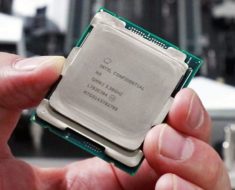When it comes to trends in IT, we tend to think of computer programming, software, and similar technology-based areas of development. However, it has been made clear in recent years just how heavily hospitals and other healthcare facilities rely on technological advancements. An enormous 75% of hospitals believe that keeping up with today’s advancements and trends in IT is a vital part of remaining on the cutting-edge of modern healthcare practices. Among larger medical centers, at least 75% of them are making plans to adopt an IT innovation center if they don’t already have one. Drew Madden, IT Healthcare professional, discusses why the following five areas are important sectors where medical establishments are currently investing in innovative technology in order to provide a superior patient treatment experience.
* Making Use of Patient-Generated Data
More Americans than ever before are making regular use of wearable fitness devices, apps that track food and nutrient intake, and other forms of taking their health into their own hands. Now doctors, hospitals, and clinics are incorporating ways to use this data to improve their patient’s healthcare. The information obtained from these devices can give physicians firsthand insight into the daily routine and overall current health status of their patients, allowing them to offer beneficial advice and treatment recommendations that can make an immediate difference. Since this is not information that most patients would even have unless they were making use of these wearable fitness devices, it is not information that can be easily recounted to medical professionals. It can be extremely useful, however, for doctors to learn the precise dietary intake and physical fitness of a patient in order to effect real and positive change in their long-term health.
* Managing Network Integrity
Tracking and managing details of patient populations is a large but important task of medical centers and hospitals. This task requires access to thousands of patients and their personal healthcare information across an entire network of medical facilities and treatment centers. However, as healthcare organizations begin to embrace value-based care for their patients, it becomes essential to properly track and maintain the privacy of the following types of information:
– Patient utilization data
– Profitability of the medical center
– Management of demand
– Patient readiness and compliance with treatment
– Advanced scheduling tasks
* Retention and Management of Referrals
As with any other business model, healthcare settings also rely heavily on retention of clients, earning a profitable revenue, and obtaining proper reimbursement from patients and insurance companies alike. Hospitals and other large organizations that handle thousands of patients at any given time also depend on modern technological advancements that will help them make appropriate connections with other facilities, provide proper patient referrals when needed, and be better equipped to offer logic-based patient screening tools. All of these services combine to provide a wide variety of benefits to patients seeking medical care, as well as benefits to the medical organizations they entrust with their care. Some of these benefits experienced include the following:
– Better and easier access to services provided
– Improvements in the patient referral process
– Effectively coordinating patient care between multiple physicians and facilities
– Improvements in in-network utilization of desired services
* Support from the Community
Patients don’t simply need medical care while at the doctor’s office or while in the hospital recovering from a procedure. Proper patient support extends to the community at large, and continual access to support is essential in providing outstanding patient care. In terms of controlling costs and improving patient outcomes, it is also essential to provide community-based support. This is especially true when dealing with patient populations that are already underserved for various reasons. Current advancements in digital and technological based programs now provide better and easier ways for medical facilities to create virtual networks, connect to other patient care partners, and coordinate care across a large area of services.
* Convenience of Patient Access to Care
Telemedicine is a growing area of interest for both medical facilities and patients alike. People today live far busier lifestyles than ever before. Access to telemedicine is convenient and provides the same level of trusted care as being right there face to face with a medical professional. Patients who regularly use many prescriptions and other treatments also depend heavily on being able to access refills and pertinent information promptly, all of which can easily be done electronically to reduce healthcare employee burden and costs. It should be noted that today’s healthcare customers expect this type of technology to be available, so if they don’t find it with one hospital or treatment center, they will likely seek medical care elsewhere.
Google Recognizes the Importance in Technological Advancements in Healthcare
Even the technology giant Google has recognized the importance of keeping up with technological advancements in the healthcare setting. Google has recently announced that it is partnering with three large hospitals that put their main focus on research. The goal of these unique partnerships is to find out exactly how the gathering and use of data taken from patient healthcare records can provide improved clinical care for patients across America. It is hoped that with proper understanding and use of this data, electronic “brains” may even be able to accurately determine which patients are likely to require hospitalization, how long they will need to stay, and which treatment methods might be the most effective for them. In this way, it can become possible for advanced machines to predict patient needs before they ever actually arise, making comprehensive care faster and easier when it is needed.
Who is Drew Madden?
Drew possesses a Bachelor of Science Degree in industrial engineering from Iowa University. He is a seasoned healthcare business executive who is dedicated to building quality and performing workforce, trusted work relations, and dynamic work culture. Madden is an experienced seasoned healthcare information technologist and entrepreneur. He has over 15 years of administrative experience in HCIT. Currently, he is a founding partner at Evergreen Healthcare.
Follow Madden online:
Dil Bole Oberoi





